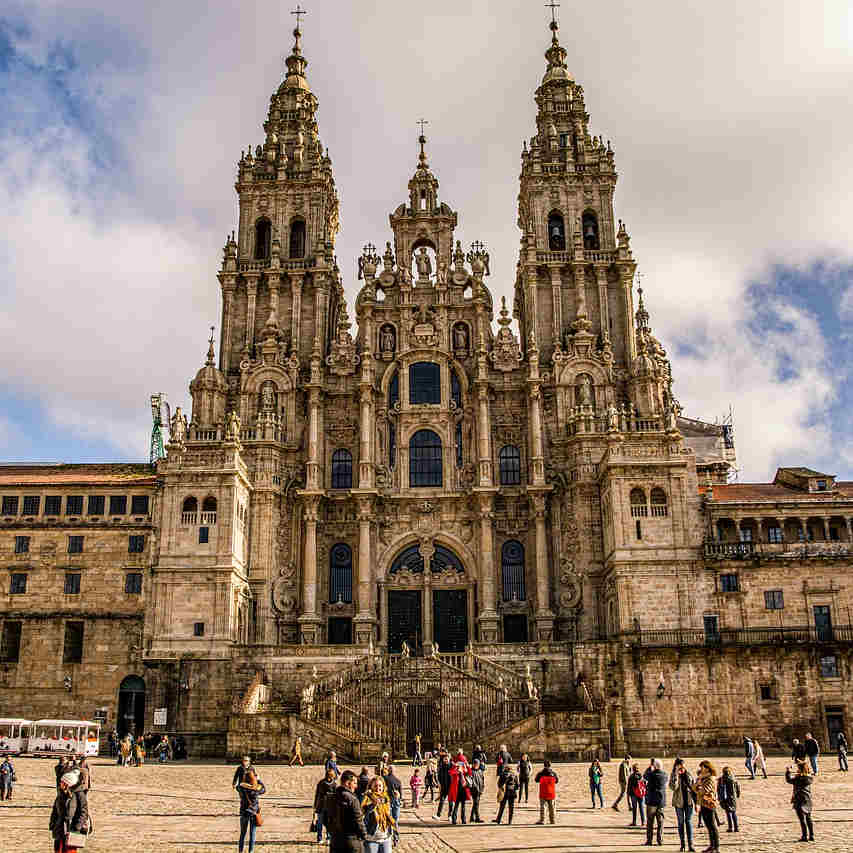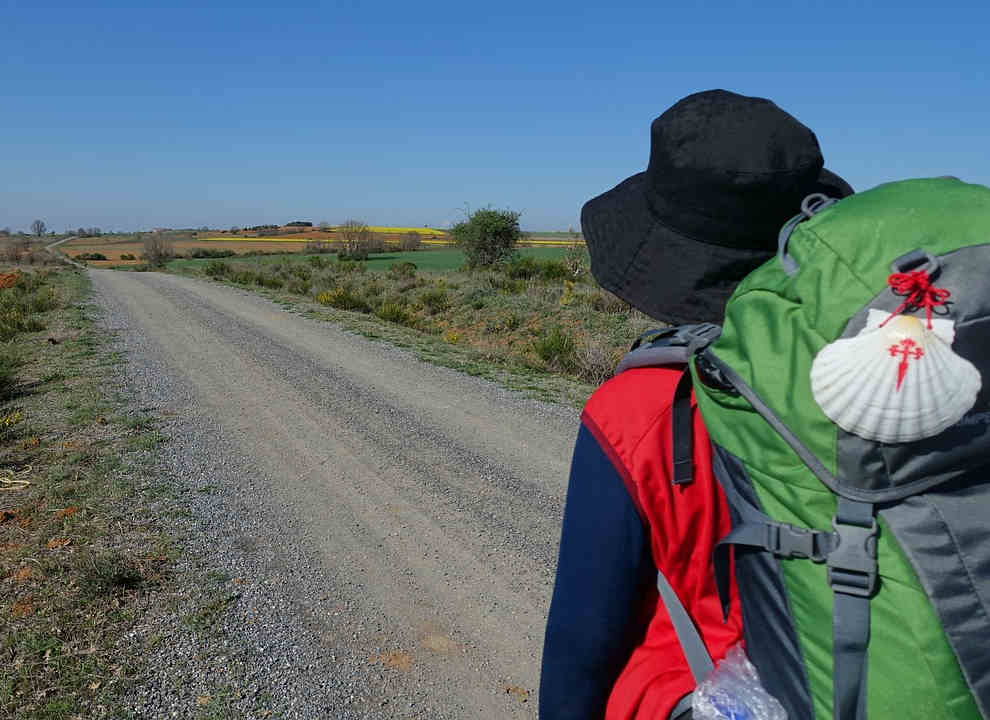About the Camino
The Way of St. James, or Camino de Santiago, was one of the most significant Christian pilgrimages during the later Middle Ages, offering pilgrims the opportunity to earn a plenary indulgence. Other major pilgrimage routes of the time included the Via Francigena to Rome and the journey to Jerusalem.
The Routes We Take
Discover for yourself a bit about the routes that we will take seminarians and aspiring religious on when they walk the Camino with your help!
The remains of St. James were transported by boat from Jerusalem to northern Spain, where he was buried in what is now the city of Santiago de Compostela.
Pilgrims could choose from several routes to reach Santiago de Compostela, with many starting from their homes and others from designated starting points. While various routes existed, a few were considered major paths.
Today, more than a half-million will travel the Camino de Santiago each year to come to the Tomb of St James in the Cathedral. In doing so, they will go under the Altar and leave their intentions at the foot of the Tomb. Then, they will be able to go above the Altar, where a life-sized statue of St. James sits, and be able to hug him. This brings most Pilgrims to tears, just as the monks followed the stars long ago, pilgrims now follow the arrows along the Camino to reach Santiago.


The tomb of Saint James in Santiago was rediscovered in AD 814 by Pelagius the Hermit, who saw mysterious lights in the sky above the Libredon Forest. Bishop Theodomirus of Iria interpreted this as a divine sign and informed King Alfonso II of Asturias and Galicia (791–842).
The king recognized the significance of the site and ordered the construction of a chapel there, becoming the first pilgrim to visit the shrine. This led to the construction of the first church in AD 829, followed by a pre-Romanesque church in AD 899, commissioned by King Alfonso III of León.
This series of events contributed to the development of Santiago de Compostela as a major pilgrimage destination.
In 997, the early church was destroyed by fire at the hands of Al-Mansur Ibn Abi Aamir (938–1002), the military commander of the Caliph of Córdoba. However, St. James’s tomb and relics remained untouched.
The gates and bells from the church were taken by local Christian captives to Córdoba and later incorporated into the Aljama Mosque. When King Ferdinand III of Castile captured Córdoba in 1236, these same gates and bells were transferred by Muslim captives to Toledo, where they were placed in the Cathedral of Saint Mary of Toledo.
Construction of the present cathedral began in 1075 during the reign of Alfonso VI of Castile (1040–1109) and under the patronage of Bishop Diego Peláez. The design was based on the monastic church of Saint Sernin in Toulouse, one of the greatest Romanesque structures in France. Built primarily from granite, construction faced several delays, and according to the Liber Sancti Iacobi, the last stone was laid in 1122. By this time, however, the cathedral was still incomplete. It was finally consecrated in 1211, in the presence of King Alfonso IX of León.
The cathedral in Santiago de Compostela declares a Holy or Jubilee Year whenever St. James’s feast day, July 25, falls on a Sunday. These Holy Years occur at intervals of 5, 6, or 11 years, depending on leap years. Recent Holy Years included 1993, 1999, 2004, 2010, and 2021, with the next ones scheduled for 2027 and 2032.
We Need Your Help!
We need your help to make this happen. We are asking for your financial support to help us see the foundation succeed.